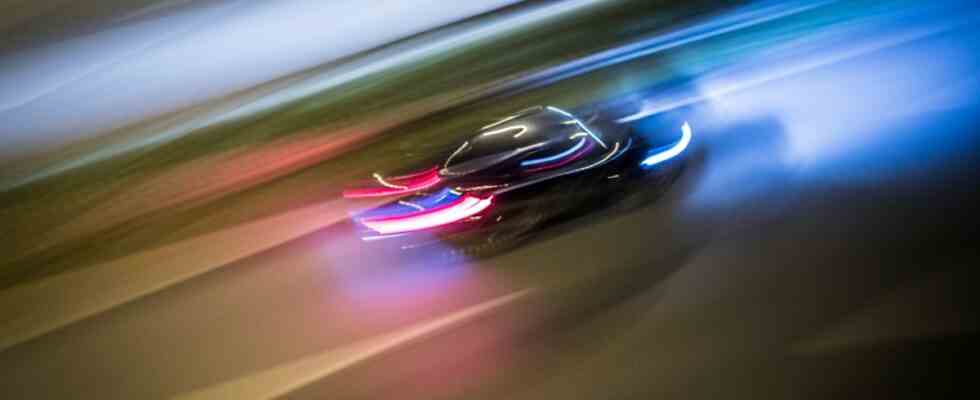The number of illegal car races on Bavaria’s streets is still at a high level – also because the police have been consistently counting drivers fleeing controls for some time. Because it is quite often the case that the drivers should stop – but instead step on the gas pedal and race through towns and red traffic lights at more than 150 things. Something like that is now counted as a “single race”. But races on the streets still occur. Sometimes even sports car owners from abroad meet to drive their cars in Bavaria – regardless of any rules.
Between January and the end of October, the police officers in the Free State registered 469 illegal motor vehicle races, including motorcyclists. In the whole of 2021 there were 555, in the previous year with 560 almost as many, as the Bavarian Ministry of the Interior of the German Press Agency informed on request. In 2019, only 294 illegal races appeared in the statistics, in 2018 there were again significantly fewer at 191.
It should be noted that the current figures come from the police process management, which as a dynamic database is primarily used for processing and is only suitable for statistical evaluations to a limited extent.
According to the Ministry of the Interior, there is no such thing as a “typical” racer. “Based on the identified suspects, it can be seen that they are recruited from all age groups as well as from across the population.” A special connection with origin or nationality could not be determined. What is striking, however, is that there is not a single driver in a non-representative list of particularly blatant cases.
Basically, the police differentiate between three types of prohibited races. First: Organized illegal races, often with international routes and sometimes lasting several days, in which Bavaria is usually passed through as a transit country. Second: private illegal races, which are often arranged at very short notice or arise spontaneously through the encounter of like-minded people on the road. Third: So-called individual races, in which the driver drives too fast, in a way that violates traffic regulations and is reckless in order to reach the highest possible speed.
There are plenty of examples of all three forms from the past year. Ten super sports cars, most of which were registered in other European countries, raced on May 6 near Pocking in Lower Bavaria on federal highway 12. Although the speed limit there is only 100 km/h, the drivers sometimes drove on the federal highway at 180 things and also fell through a risky driving style and dangerous overtaking manoeuvres.
On August 26, police officers in Munich noticed two vehicles whose drivers were driving side by side in the two lanes in the same direction and then accelerated significantly at the same time. When one of the drivers noticed the police lights flashing, he tried to flee at about 160 kilometers per hour, but lost control and first collided with a tree before crashing into a house wall.
On the other hand, a 20-year-old was driving far too fast alone, driving past a civil patrol in the Munich city area with over 100 things and the blue lights on on the roof – and not slowing down even in a 30 km/h zone.
Also noteworthy is the escape of a car at the end of July: Instead of stopping at a check, the driver accelerated to over 100 in town. At the wheel: a 14-year-old, next to him two 18 and 20-year-old adolescents.

